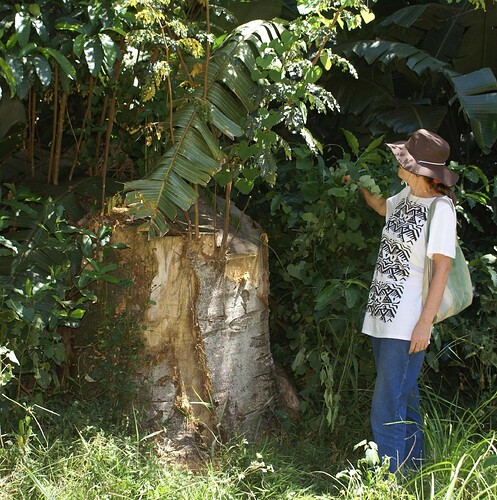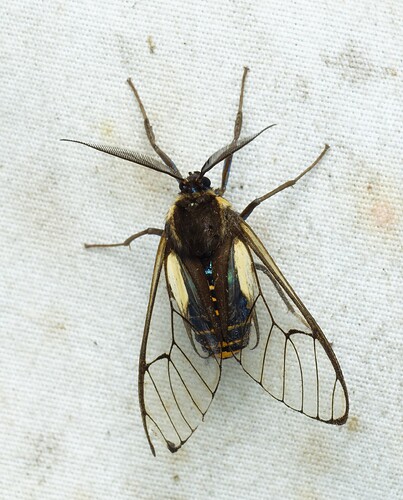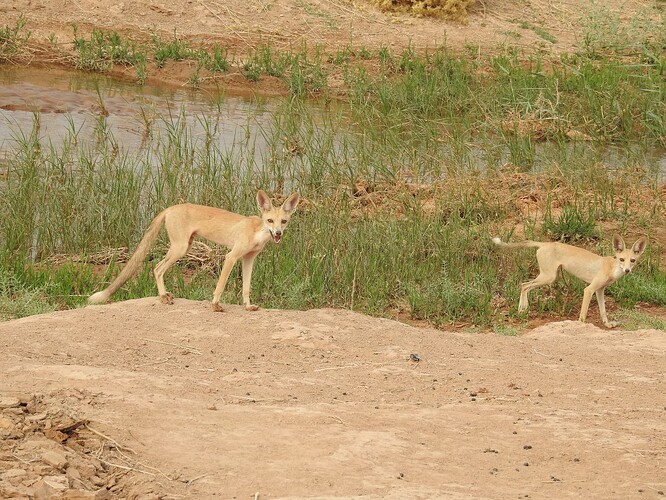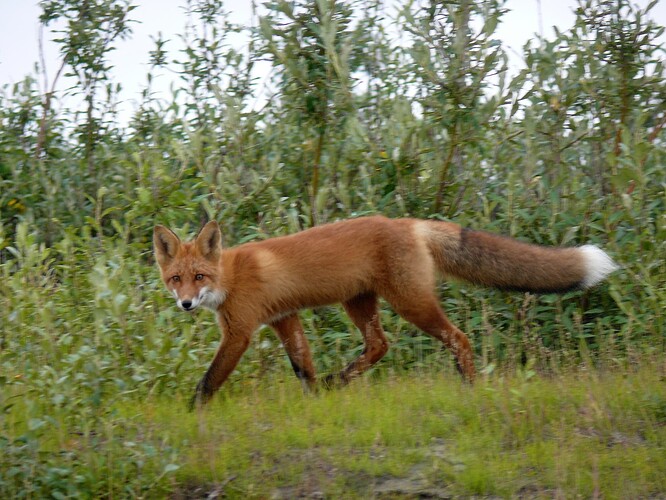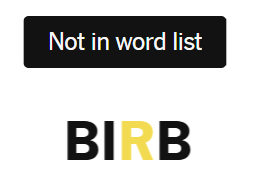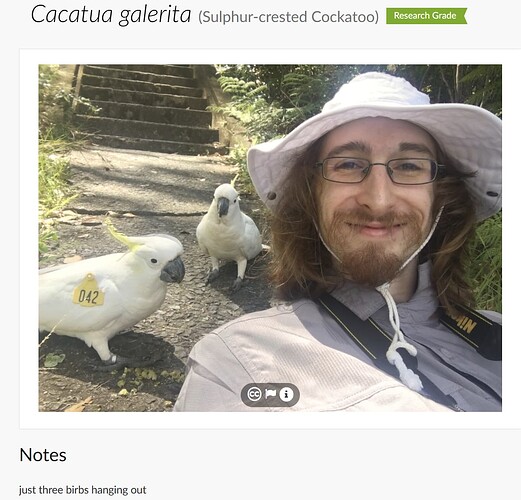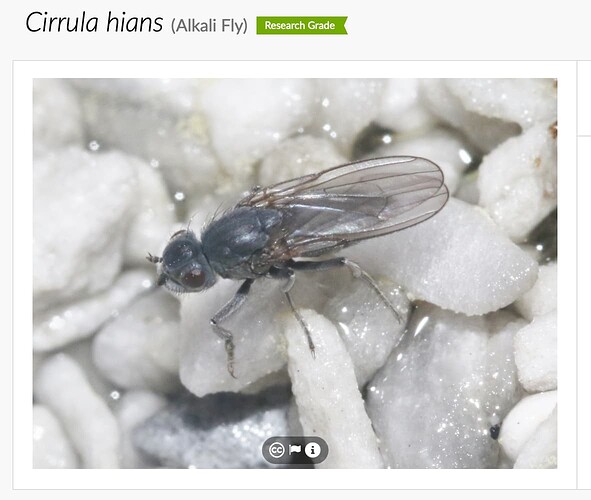me, too.
The South Island takahē is a species of flightless swamphen native to New Zealand. They were thought to be extinct by the end of the 19th century, but in 1948 a small population was rediscovered in the remote Murchison Mountains of the South Island. See more info here: https://www.doc.govt.nz/takaherecovery and https://en.m.wikipedia.org/wiki/Takahē.
I don’t have my own takahē observation but did photograph a car (maybe a DOC vehicle?) with takahē painted on the side and takahē cutouts in the backseat:
I don’t want to get into a lumper/splitter argument, so here’s the wikipedia page for ecotype: https://en.wikipedia.org/wiki/Ecotype
https://www.inaturalist.org/observations/133430585 is an observation of the neotype of Acanthopagrus datnia, from this publication: Hasan, M.E., Durand, J.-D. & Iwatsuki, Y. (2020)
Acanthopagrus datnia (Hamilton, 1822), a senior synonym of Acanthopagrus longispinnis (Valenciennes, 1830) (Perciformes: Sparidae). Zootaxa, 4750 (2), 151–181. https://doi.org/10.11646/zootaxa.4750.2.1
In taxonomy, a topotype is a specimen that was obtained from the same location that the original type specimen came from.
https://www.inaturalist.org/observations/127003906 is a topotype observation of Trachykele fattigi.
Off topic but my father-in-law referred to the fallen Bougainvillea bracts on his patio as “bougies” and I almost died laughing.
Bole: the stem or trunk of a tree
https://www.inaturalist.org/observations/1890518
To coppice a tree usually means to intentionally cut it for the purposes of harvesting and ultimately regrowing the tree from new shoots. This process can also happen naturally, more details: https://en.wikipedia.org/wiki/Coppicing
Mothed - past tense of verb that means to look for moths.
Example: Tony mothed while in Ecuador and found this weird one with see-through wings.
Ugh, I was also annoyed by this the other day!
Clinal: relating to a cline – often seen in the phrase “clinal variation”
From wikipedia, a cline is a measurable gradient in a single characteristic (or biological trait) of a species across its geographical range.
Also stealing wikipedia’s example of body size (but using iNat observations) – red foxes tend to be slimmer in hotter climates and chunkier in colder climates.
For a related topic, please see Using iNat maps to illustrate Ensatina as a ring species.
Owling: looking for owls
The word doesn’t appear in my Merriam-Websters app, but it should! It’s a term commonly used by birders in North America (and maybe elsewhere?). There is a website called owling.com with information on different species, and Mass Audubon (Massachusetts, US) has an online article called “Owling 101: How to Spot an Owl”: https://www.massaudubon.org/news/latest/owling-101
Observation of a barred owl: https://www.inaturalist.org/observations/234741602. We heard it calling and went owling to find it!
Hey, they recognized TAXON today, so I give them credit for that. CORM and ANOLE are some of the rejects I’ve tried. Overall, I think being a naturalist gives me an edge in the game.
“Owling” was the Fictionary word in January-March 2008 with a completely different meaning (except that both are done at night):
owling (n.) So called from it’s being ufually carried on in the night, is
the offence of tranfporting wool or fheep out of this kingdom, to the
detriment of it’s ftaple manufacture.
Oh cool! I was just reading about that in a book on sheep - wasn’t expecting the same obscure medieval crime to pop up twice in a row!
We have a new blur spoiler feature for the forum. This topic is still for posting words that are NOT accepted, but if you absolutely must also include an accepted word in your post, put it in spoiler text, even if it’s from a past bee. It’s in the plus menu in the compose text area:
If you don’t put it in spoiler text, we will edit your post (as I have already done for the most recent post with an accepted word).
Vittae and vittate don’t work for today! Means horizontal striping in an organism.
Leiobunum vittatum comes from these words
Also, today’s pangram is part of the DQA!
I can’t find it.
Edit: I found it!
That’s because “birb” is not yet an official word; it’s slang. Slang takes a while to get into dictionaries.
Yesterday milt wasn’t in there - no screenshot of the actual game.
milt
noun
: the sperm-containing fluid of a male fish
This one is sort of nature-adjacent, since rocks and minerals aren’t a part of iNat.
Tufa: a porous rock composed of calcium carbonate and formed by precipitation from water, e.g. around mineral springs.
—Dictionary on my MacBook
Also another word for tuff.
One well-known place to see tufa towers or columns in the United States is Mono Lake, on the east side of the Sierra Nevada in California. Here is an observation of two ospreys (Pandion haliaetus) on a nest on a tufa tower at Mono Lake, by @teresa-5874 : https://www.inaturalist.org/observations/270074060
The alkali fly (Cirrula hians) is adapted to living in super-saline environments such as Mono Lake: https://www.monolake.org/learn/aboutmonolake/naturalhistory/alkaliflies/. Three of their four life stages—egg, larva, and pupa—occur underwater, and even an adult fly can reportedly spend up to 15 minutes underwater, using a trapped bubble of air around its body as it forages.
Observation of an alkali fly at Mono Lake by @silversea_starsong : https://www.inaturalist.org/observations/183003427
Been to at least two tufa spots: Mono Lake and the Trona Pinnacles. Theyr’e so cool!
Speaking of California deserts, here’s a term I’m a bit bummed isn’t in the game:
Datura is a plant genus in the nightshade family, at least one species has the common name “sacred datura”. They’re pretty common along roadsides in the dry areas of California. It’s been used as an anesthetic and hallucinogen.








